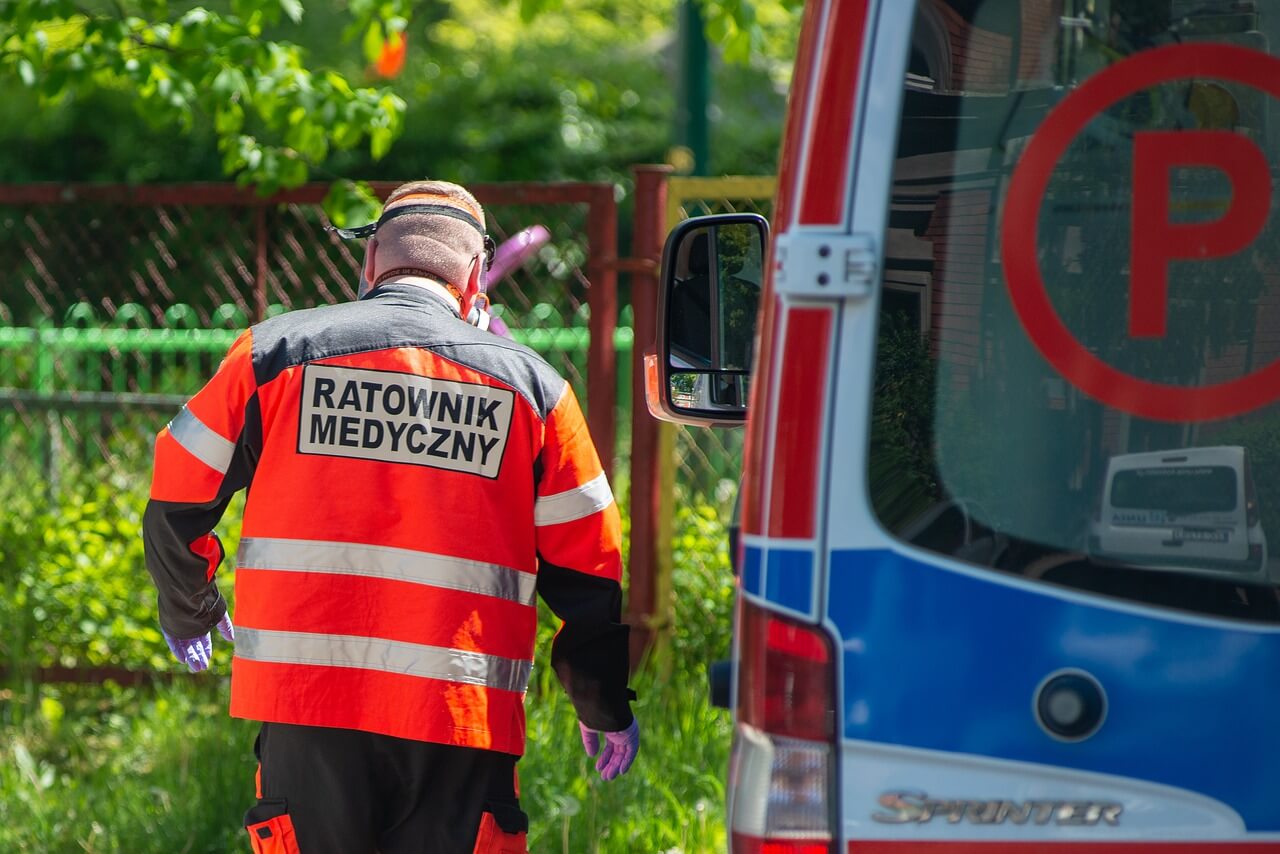Members of medical emergency teams, being on the front line during rescue operations, are exposed to direct contact with blood, secretions, and body fluids of the injured. Field conditions significantly differ from those in an operating room, both in terms of control and the possibility of using various types of protective measures. Therefore, the basic form of protection for a paramedic are disposable gloves and accessories belonging to the category of personal protective equipment. What characteristics should gloves for paramedics, emergency nurses, and system physicians have?
Gloves for Paramedics – Safety is the Priority
One of the fundamental principles of medical rescue is personal safety. In every situation, before providing assistance, it is crucial to secure both the scene and oneself.
The rescue team, as well as witnesses providing first aid, may come into contact with the injured person’s blood, saliva, vomit, etc. Body fluids of the injured person may contain potentially dangerous pathogens, especially including HIV, hepatitis B and C viruses, among others.
Contact with blood and the potential for infection is a significant risk factor, hence protective gloves are a standard in medical practice. A secondary, but equally important factor is psychological comfort – gloves provide a barrier against direct contact with the body of the ill person. Single-Use protective gloves in the practice of a medical first responder are a fundamental means of protection.

What characteristics must gloves have in medical rescue?
Środki ochrony indywidualnej (ŚOI) ratownika medycznego muszą wyróżniać się przede wszystkim odpornością na uszkodzenia. W warunkach udzielania pomocy może dojść do sytuacji, w których zachodzi ryzyko przypadkowego rozerwania, przebicia lub przecięcia rękawiczki. Z tego względu materiał powinien być wytrzymały. W standardzie używane są rękawiczki nitrylowe.
Nitrile is a synthetic material with very good protective properties. However, due to the fact that it is less stretchable, the gloves need to be well-fitted. Their advantage is that they provide high precision of movement, are resistant to mechanical damage and chemical agents. In the practice of emergency medical services, nitrile gloves are a recommended, very good choice.
If you want to learn more about the differences between latex and nitrile gloves, read this article, and for a comparison of the properties of gloves, you can find it here.
Additional Protection
Although gloves provide sufficient protection against microbiological agents, in medical rescue, it is often common practice to wear two pairs of protective gloves. This is due to the specific conditions in which medical rescue operates. Wearing two pairs of disposable gloves allows for a quick change of the contaminated pair without the need to waste time looking for and putting on new gloves. This ensures better protection against mechanical damage, as even if the outer pair of gloves is torn, the inner pair remains intact.
Medical Rescue – Gloves Are Not Everything
Single-use gloves are a basic form of protection against infections in emergency medical practices, but one must also remember other personal protective equipment (PPE) for medical first responders – protective clothing, masks, and goggles. Above all, it’s crucial to remember the rules of hand hygiene and to disinfect hands before using gloves and after removing them, to ensure that no pathogens remain on the skin that could be accidentally transferred. Read more about hand hygiene rules and correct use of medical gloves.
Personal Protective Equipment (PPE) of medical first responders ensures safety during rescue operations. Medical first responders, as well as other members of rescue teams and the national medical rescue system, should pay special attention to selecting the best possible gloves.
Bibliography:
1. Łukasz Szarpak, Wiedza dotycząca aseptyki i antyseptyki oraz przestrzeganie ich zasad jako elementy profilaktyki zakażeń w pracy ratownika medycznego, Med Pr 2013;64(2):239–243l
2. Centralny Instytut Ochrony Pracy – Państwowy Instytut Badawczy, „Ratownik medyczny. Międzynarodowa karta charakterystyki zagrożeń zawodowych”, ciop.pl;
3. Ustawa z dnia 8 września 2006 r. o Państwowym Ratownictwie Medycznym, Dz.U.2020.882 t.j.
4. Witold Gacek, Katarzyna Majchrzycka, Środki Ochrony Indywidualnej, Podstawy i Metody Oceny Środowiska Pracy 2004, nr 3 (41), s. 53–60;
5. Medycyna Praktyczna, Bezpieczeństwo ratownika na miejscu zdarzenia, mp.pl dla pacjentów (25.06.2019);
 Polski
Polski